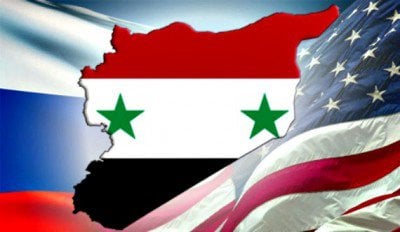Syria – How Long Will The New Cessation of Hostilities Hold?

Tonight Russia and the U.S. agreed to some new Cessation of Hostilities (CoH) in Syria.
The general negative points:
- This CoH, like the first one in February, comes at a moment where the Syrian government forces have an advantage in the field and are on the verge of renewed offensives.
- It gives the opposition the time to reorganize and rearm.
- It severely restricts Syrian sovereignty.
The general positive points:
- The Syrian government lacks the capacity for a fully military solution of the conflict. The agreement is a possible path to a political solution.
- It gives the government time to rebuild its army and to issue and train on new equipment.
- It has enough flexibility to allow for local escalation when and where needed.
On the agreement itself.
- The Syrian government has, according to the Russians, agreed to it.
- The parties agreed to keep many details secret to prevent other actors from spoiling it.
- The agreement will start on sundown of September 12
The timeline, as far as announced or known:
- A general CoH for with a trial period of 48 hours.
- If the CoH holds during the trial period it will be prolonged to one week.
- After one week successfully passed, the U.S. and Russia will start common action against al-Qaeda in Syria.
Some Details as AP describes them (there is some doubt that this is 100% correct):
The military deal would go into effect after both sides abide by the truce for a week and allow unimpeded humanitarian deliveries. Then, the U.S. and Russia would begin intelligence sharing and targeting coordination, while Assad’s air and ground forces would no longer be permitted to target Nusra any longer; they would be restricted to operations against the Islamic State.The arrangement would ultimately aim to step up and concentrate the firepower of two of the world’s most powerful militaries against Islamic State and Nusra, listed by the United Nations as terrorist groups.
The agreement excludes the area in south-west Aleppo where the recent attempt by al-Nusra and others to lift the siege on east-Aleppo failed. The Castello road in north-west Aleppo will be demilitarized to carry aid. (It is yet unknown who will supervise and enforce this by what means.)
It looks as if there has been unseemly resistance to this agreement by parts of the U.S. government. This may have been just for show. But it may also be a sign that Obama lost control of the bureaucracy:
The proposed level of U.S.-Russian interaction has upset several leading national security officials in Washington, including Defense Secretary Ash Carter and National Intelligence Director James Clapper, and Kerry only appeared at the news conference after several hours of internal U.S. discussions.After the Geneva announcement, Pentagon secretary Peter Cook offered a guarded endorsement of the arrangement and cautioned, “We will be watching closely the implementation of this understanding in the days ahead.”
If this deal falls apart, as it is likely to eventually do, all responsibility will be put onto Secretary of State Kerry. Indeed the military and intelligence parts of the U.S. government may well work to sabotage the deal while Kerry will be presented as convenient scapegoat whenever it fails.
This new CoH is unlikely to hold for more than a few weeks:
- Too much is left undefined. This allows any party to claim the other side broke it whenever convenient.
- The powers who agreed on the deal do not have control over main elements on the ground.
- There are too many parties, inside and outside of Syria, who have an interest in spoiling the CoH.

